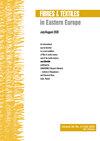Analysis of Clothing Image Classification Models: A Comparison Study between Traditional Machine Learning and Deep Learning Models
IF 0.9
4区 工程技术
Q3 MATERIALS SCIENCE, TEXTILES
引用次数: 2
Abstract
Abstract Clothing image in the e-commerce industry plays an important role in providing customers with information. This paper divides clothing images into two groups: pure clothing images and dressed clothing images. Targeting small and medium-sized clothing companies or merchants, it compares traditional machine learning and deep learning models to determine suitable models for each group. For pure clothing images, the HOG+SVM algorithm with the Gaussian kernel function obtains the highest classification accuracy of 91.32% as compared to the Small VGG network. For dressed clothing images, the CNN model obtains a higher accuracy than the HOG+SVM algorithm, with the highest accuracy rate of 69.78% for the Small VGG network. Therefore, for end-users with only ordinary computing processors, it is recommended to apply the traditional machine learning algorithm HOG+SVM to classify pure clothing images. The classification of dressed clothing images is performed using a more efficient and less computationally intensive lightweight model, such as the Small VGG network.服装图像分类模型分析:传统机器学习与深度学习模型的比较研究
服装形象在电子商务行业中扮演着重要的角色,为顾客提供信息。本文将服装形象分为纯服装形象和盛装服装形象两大类。它以中小型服装公司或商家为目标,比较传统的机器学习和深度学习模型,以确定适合每个群体的模型。对于纯服装图像,与Small VGG网络相比,采用高斯核函数的HOG+SVM算法获得了最高的分类准确率91.32%。对于穿着的服装图像,CNN模型的准确率高于HOG+SVM算法,其中Small VGG网络的准确率最高,达到69.78%。因此,对于只有普通计算处理器的终端用户,建议采用传统的机器学习算法HOG+SVM对纯服装图像进行分类。服装图像的分类使用更高效、计算强度更低的轻量级模型,如Small VGG网络。
本文章由计算机程序翻译,如有差异,请以英文原文为准。
求助全文
约1分钟内获得全文
求助全文
来源期刊

Fibres & Textiles in Eastern Europe
工程技术-材料科学:纺织
CiteScore
1.60
自引率
11.10%
发文量
12
审稿时长
13.5 months
期刊介绍:
FIBRES & TEXTILES in Eastern Europe is a peer reviewed bimonthly scientific journal devoted to current problems of fibre, textile and fibrous products’ science as well as general economic problems of textile industry worldwide. The content of the journal is available online as free open access.
FIBRES & TEXTILES in Eastern Europe constitutes a forum for the exchange of information and the establishment of mutual contact for cooperation between scientific centres, as well as between science and industry.
 求助内容:
求助内容: 应助结果提醒方式:
应助结果提醒方式:


